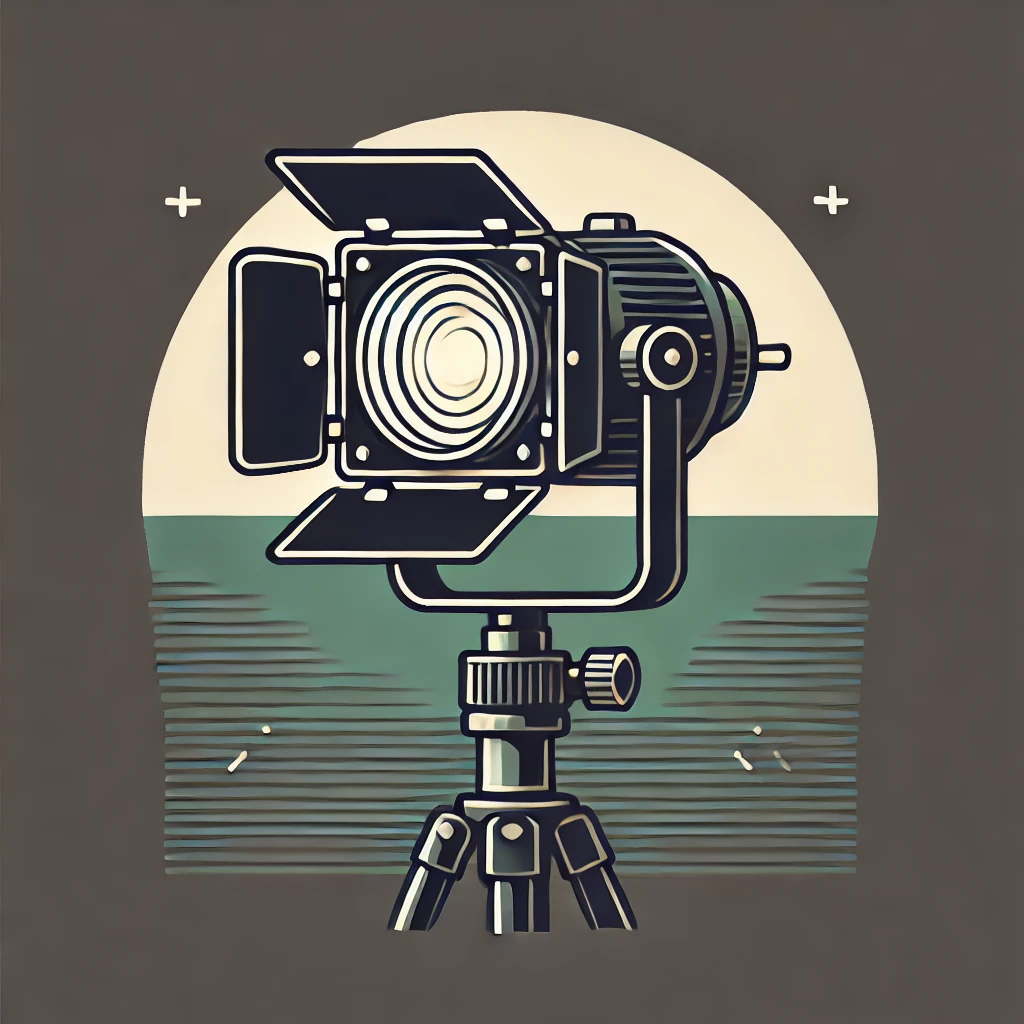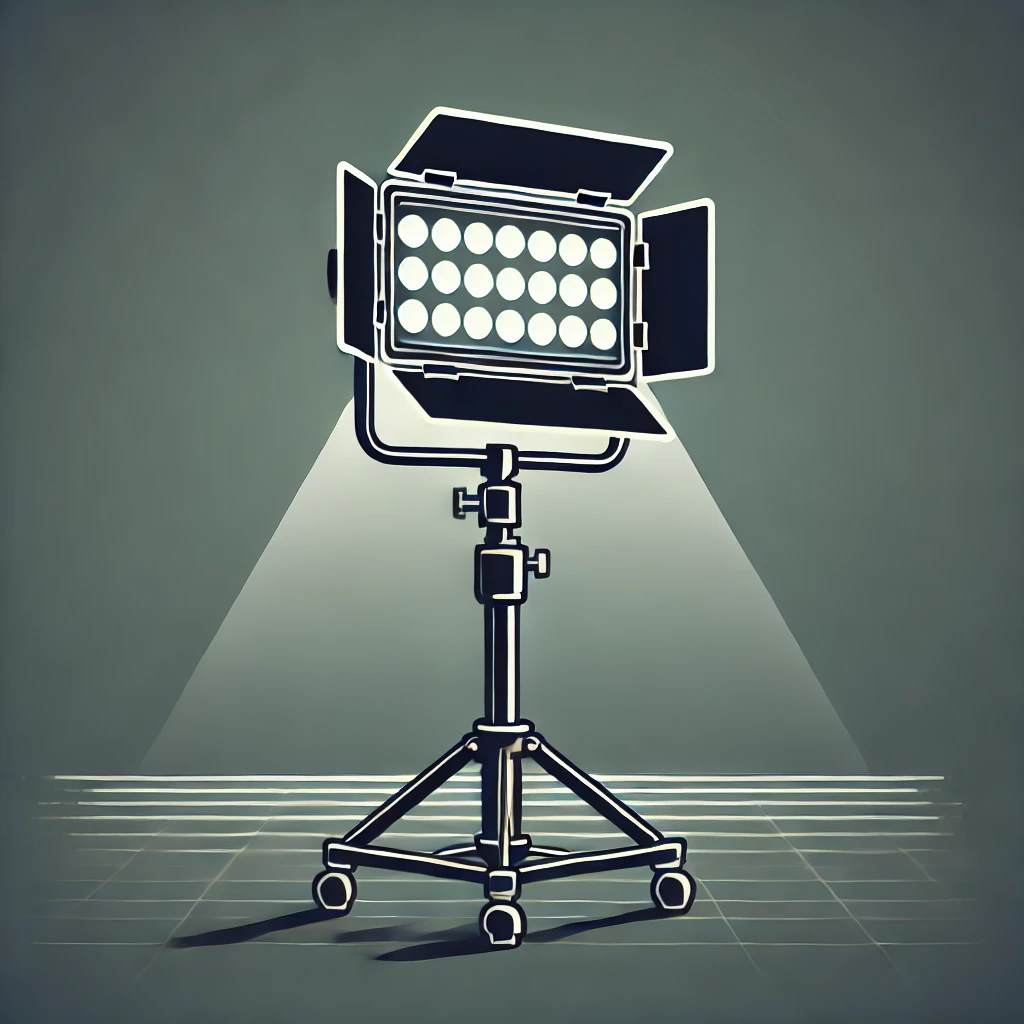Table of Contents
If you’ve ever watched a film and felt something you couldn’t quite explain, chances are the lighting had everything to do with it. Whether you’re shooting a tense dinner scene in a Lagos apartment or a heartfelt interview in Enugu, lighting shapes how your story is felt. It’s the element that makes amateur footage look intentional and professional.
Why Lighting is Important
Lighting helps set the emotional temperature of a scene. Warm tones can create intimacy. Harsh lighting might signal tension or conflict. Soft fill can bring out tenderness. In Nollywood, where filmmakers often work with tight budgets and limited gear, lighting has become a space for innovation. Portable lights, car headlights, and even torchlights have all stood in for big-budget equipment when needed and some of those solutions have become part of the culture.
Understanding the basics — intensity, color temperature, and light direction gives you the power to control how your audience feels.
How Light Works on a Film Set
Every lighting setup, no matter how simple or complex, relies on three basic qualities:
Intensity controls how bright or dim your scene appears. A strong key light might bring focus to your subject, while lower intensity can create mood or mystery.
Color temperature determines whether your light appears warm (orange/yellow) or cool (blue/white). Measured in Kelvin, warmer lights are around 3200K, while daylight appears closer to 5600K.
Direction and placement decide where shadows fall and how your subject is modeled. The classic three-point setup uses a key light (main source), a fill light (to soften shadows), and a backlight (to separate the subject from the background).

Tungsten Lights
Tungsten lights are a classic. With a warm color temperature around 3200K, they’ve been the standard in studios for decades. They’re reliable, consistent, and still used in many Nollywood productions.
One of their biggest strengths is how naturally they render skin tones. That’s why you’ll find them in interview setups or tightly controlled studio shoots. They’re also relatively easy to find and fix — which makes them great for Nigerian filmmakers operating on limited budgets.
But tungsten lights do come with challenges. They get hot, fast. On more than one set, I’ve seen crews rotating people just to escape the heat. They also use a lot of electricity, which isn’t ideal if you’re relying on generators.

LED Lights
LED lights are the new standard in many parts of the world and they’re catching on fast in Nollywood. They’re cooler (literally and visually), lighter, and far more energy-efficient. You can adjust brightness and color temperature on the fly, which saves time and makes them incredibly versatile.
For shoots where portability matters — like shooting on rooftops, inside moving vehicles, or in areas without stable electricity, LEDs are a gift. They stay cool even after hours of use, so your cast won’t be sweating under the lights.
The main drawback is cost. High-quality LED panels are still more expensive than tungsten lights. And if you buy cheaper ones, you might run into problems with color accuracy or flickering, especially under certain frame rates.
Choosing the Right Light for Your Scene
If you’re shooting a quiet indoor scene with controlled conditions, tungsten lights might be perfect. Their warmth creates a cozy, familiar look that’s hard to beat. But if you’re moving around a lot, or dealing with unstable power supply, LEDs are usually the smarter choice.
Each light source brings its own flavor. Use tungsten when you want that classic, soft warmth. Use LEDs when you need speed, control, and flexibility. And when the project calls for it, don’t be afraid to mix both but just be careful with color temperature so your shots remain consistent.
How Nollywood Creators Are Using Both
Modern Nollywood often blends the old and the new. On some sets, you’ll find tungsten lights lighting the main actors, while portable LED panels bounce daylight through a window. This layered approach gives scenes depth and realism, even when working with a skeleton crew.
Some filmmakers even use cloth, local fabric, or plastic containers to diffuse their lights — an age-old Nollywood hack that still works beautifully. It’s proof that creativity matters more than brand names.
Where Lighting Is Headed
Lighting tech is moving fast. We’re now seeing smart LED systems with built-in effects, programmable scenes, and battery packs that last for hours. These innovations are becoming more affordable by the year, and Nollywood is taking notice.
Eventually, we may see AI-powered lighting adjustments and fully wireless setups on lower-budget sets. The key is staying curious and learning to use what you have because technology alone doesn’t make good lighting. Understanding does.
Final Thoughts
Lighting is how your story speaks visually. It guides the audience’s emotions, tells them where to look, and adds polish to your work. Whether you’re using a tungsten bulb in a small room or LED panels on a rooftop in Yaba, the goal is the same: create feeling.
You don’t need to own a truckload of gear to make beautiful images. You need to understand light, experiment with it, and learn how to shape it to serve your story.
In Nollywood, where every production is an exercise in adaptation, lighting is where resourcefulness becomes style. And that’s something worth mastering.














Leave a comment